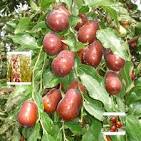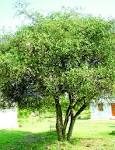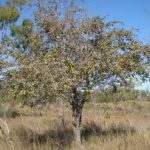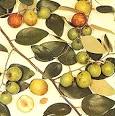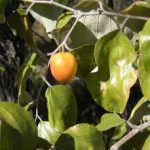Ziziphus mauritania
Uses
Burkina Faso (Bourzanga, Bam Province): fruit eaten. The dryish pulp is softened [in water?] is used to make a beverage. India (Rajasthan): the sweet and somewhat acidic fruits of this tree are processed as for Ziziphus nummularia. The fruit are somewhat larger, about 1.5cm. in diameter, and are sometimes eaten fresh; (Garhwal Himalayas): fruit eaten raw. Malawi: fruit eaten. Mozambique (Tambara district): fresh, ripe fruits are boiled in water and then sieved. The liquid is further boiled and maize [Zea mays L.] meal is added to make a porridge. Dried fruits are also crushed and mixed with maize meal [Zea mays] to make a porridge. Nigeria (Kano State, northern): fruit eaten. Cakes are made from the dried, fermented pulp, in Nigeria. NIger (Niamey): leaves used primarily as condiment and in soups. High values for linoleic acid, calcium, magnesium and zinc. Nutrient composition of a Nigerian fruit sample: Mineral values in mg./100g Protein value expressed on a 100% dry basis. Magariya Ca = 499 P = 144 Mg = 49.68 Cu = 0.22
Mn = 0.22 Zn = 1.14 Fe = 0.60 Protein = 2.31
Additional Information
- Name Authority:
- Lam.
- Vernaculars:
- (India) - Rajasthan (Jaisalmer district): Bar-bor. Rajasthan (western): Bor, Bér. Mozambique (Manyika/Shona): Musawu. Nigeria (Hausa): magarya. Fermented pulp cakes: Tuwon magarya. Beverage: K’walk’wando.Niger(Hausa):magaria.Nigeria (Hausa/Fulani): Magariya
- Misc:
- Chemical composition (Mozambique sample - fruit pulp): Moisture = 81.6%[/100g?]. Protein = 0.8%[/100g?]. Fat = 0.3%[/100g?]. Carbohydrate = 17%[/100g?]. Thiamine = 0.02%[/100g?]. Riboflavin = 0.02%[/100g?]. Niacin = 0.7%[/100g?]. Vitamin C = 76mg/100g. The fruit [pulp] contains quercetin, a flavonoid.

